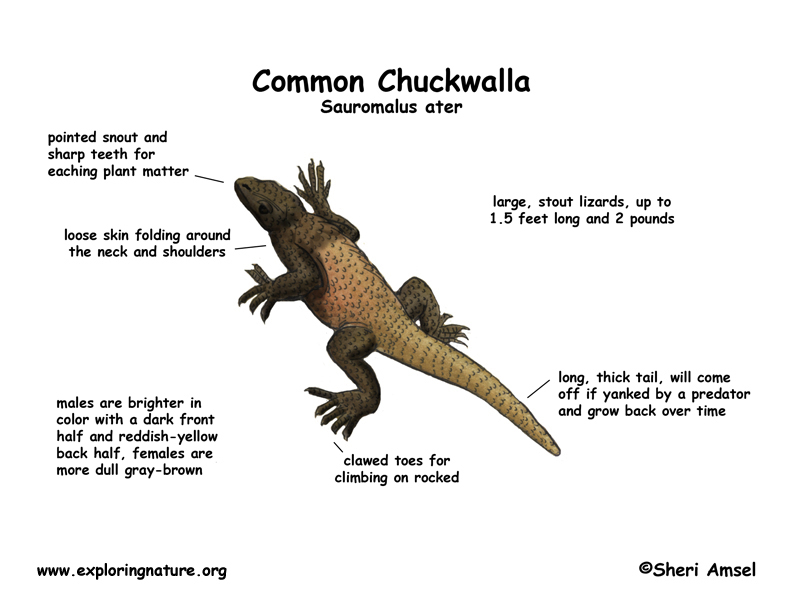

They are found in the deserts of southwestern U. S., south into Mexico. Specifically, they are found in the Mojave and Sonoran deserts in southern California, Nevada, Utah, Arizona and Mexico.
They live in open and rocky areas.
They are large, stout lizards (up to 1.5 feet long and 2 pounds) with a long, thick tail. Their tail will come off if yanked by a predator and grow back over time. They have loose skin folding around the neck and shoulders. Their coloring varies, but males are brighter in color with a dark front half and reddish-yellow back half. Females are more dull gray-brown. Young chuckwalla have black and yellow bands down the tail.
They are active during the day (diurnal) lizards needing the sun to warm them to 100° or more. They are often seen basking in the sun, but will hibernate in cooler weather. When threatened they hide in tight rock crevices and gulp air to wedge themselves in tightly.
They eat leaves, buds, flowers and fruit.
Females lay up to 16 eggs in rock crevices in the summer that will hatch by early fall.
Kingdom: Animalia
Phylum: Chordata
Class: Reptilia
Order: Squamata
Family: Iguanidae
Genus: Sauromals
Species: S. ater
When you research information you must cite the reference. Citing for websites is different from citing from books, magazines and periodicals. The style of citing shown here is from the MLA Style Citations (Modern Language Association).
When citing a WEBSITE the general format is as follows.
Author Last Name, First Name(s). "Title: Subtitle of Part of Web Page, if appropriate." Title: Subtitle: Section of Page if appropriate. Sponsoring/Publishing Agency, If Given. Additional significant descriptive information. Date of Electronic Publication or other Date, such as Last Updated. Day Month Year of access < URL >.
Amsel, Sheri. "Chuckwalla (Common)" Exploring Nature Educational Resource ©2005-2024. December 16, 2024
< http://www.exploringnature.org/db/view/529 >

